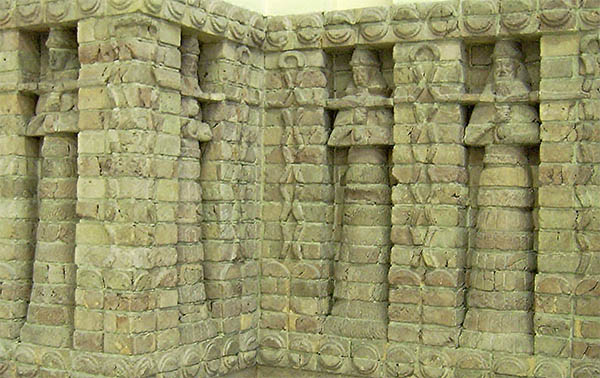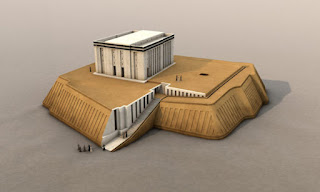
9:The White Temple and Great Ziggurat of Uruk:
Located on the Euphrates in what is now southeastern Iraq, Uruk is home to perhaps the Sumerians’ most important temple to the gods, the White Temple and Great Ziggurat. Uruk was a major city for early Sumerian culture and home to the great Sumerian hero Gilgamesh who features in the famous epic poem of that name, one of the earliest examples of narrative that survives today.
The remains of one of the most important temples of ancient Sumer now bakes in the Iraqi sun. For tourists, historians and archeologists, a great deal of imagination is required to picture the ziggurat as it actually was 5,000 years ago. Time, sun, wind, and erosion has taken its toll on the structure, but from writings and by archeological extrapolation, we can build up a picture of what the structure looked like at the height of Sumer’s power.
Overview:
Like many other cultures, the Sumerians believed the gods lived in the sky, so they constructed many of their temples on the highest point possible and made them as tall as the building technology of the time allowed. A ziggurat is a stepped pyramid. In this case, it is a broad one with a large, flat area at its apex where a massive temple was erected. Here, priests would offer prayers and sacrifices to the gods, and receive messages from the deities themselves.
Digital reconstruction of the White Temple and ziggurat, Uruk (modern Warka), c. 3517–3358 B.C.E. © artefacts-berlin.de; scientific material: German Archaeological Institute
Structure:
The White Temple was 40 feet high (12 meters), built of brick (usable stone was rare in the region), and comprised an area of 56 x 72 square feet (17 x 22 square meters). Historians estimate that it took 1,500 laborers five years to construct the temple. Inside the temple, archeologists have found the burnt skeletal remains of a leopard and a lion, a number of stone tablets reflecting the accounting of the temple, and a burn pit where it is believed that burnt offerings were given to the gods.
Additionally, they believe they have found evidence of a fountain or water system inside the temple, which indicates a level of technological understanding beyond that which we would normally associate with very ancient times.





0 Comments